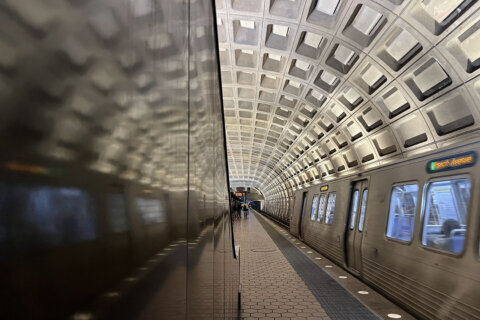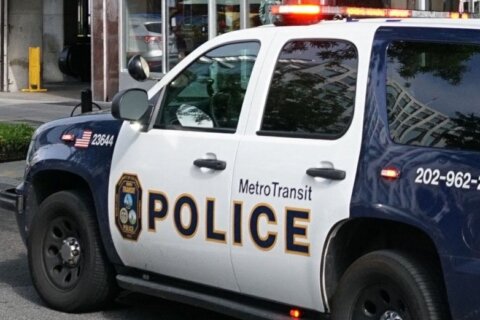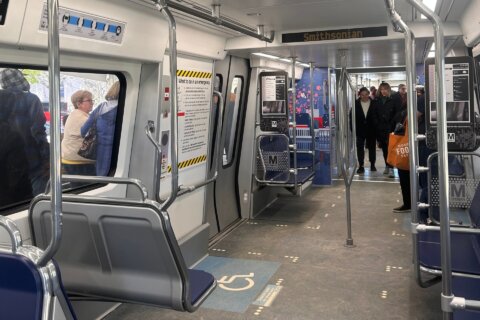WASHINGTON — Commuters could be in for a rude awakening Monday morning: The first of two work weeks begins with major Metro shutdowns that will cut off service between Prince George’s County, Maryland and downtown D.C.; and between Arlington Cemetery and Rosslyn in Virginia.
“The people of Prince George’s County are going to be cut off during this timeframe,” said Metro Board Member Malcolm Augustine, who is from Prince George’s County.
“That message has got to get to folks very clearly, and to understand that they really need to stay in place as much as possible,” he said.
Prince George’s Co. asks state for transit help
Prince George’s County Executive Rushern Baker has asked for additional help from the state to provide other ways for people to get around other than driving, but said Thursday that he had yet to hear back.
MARC is adding some extra cars to trains on the Camden Line that stop at Greenbelt, College Park and Riverdale, but MARC is not able to add any additional capacity on the Penn Line through New Carrollton.
“While we are encouraging people to go to the Green Line and to use MARC, there isn’t enough capacity even within those to take on all the people who are going to be displaced,” Augustine said.
While the county has asked for increased enforcement of High-Occupancy Vehicle (HOV) lane rules on U.S. 50 during the stretch to ensure carpoolers get the full benefits of the lanes, Augustine said he is “very concerned” and said that a few days into the surge there could be even more significant traffic jams than usual.
“We only have really two ways in from Prince George’s County: We’ve got 295 and we’ve got 50, and that’s it,” he said.
“It’s very hard for [people] to really get a sense of the gravity of what we’re talking about,” Augustine said.
Bowser: ‘make alternative plans for your next week’
Baker, D.C. Mayor Muriel Bowser, and Metro General Manager Paul Wiedefeld are urging riders who typically use the Blue, Orange or Silver Lines to find another option or, at a minimum, flex their schedules if possible.
Wiedefeld said that while a few trains can carry thousands of people, the shuttle buses can carry hundreds.
“We’re just asking everybody to think about their commutes ahead of time, and think about alternatives,” Bowser said.
In addition to carpools, buses, MARC, VRE or biking, Bowser reminded travelers that Metro’s Yellow, Green and Red Lines will be running on regular rush-hour schedules during this phase of work from Saturday to July 3.
“What we noticed in the first surge is that people didn’t really think about it until they had to think about it …make alternative plans for your next week,” Bowser said.
D.C. now estimates more than 290,000 commuters will be directly impacted by the two-week closure, in addition to any delays caused by increased traffic or other issues.
The District Department of Transportation is expanding rush-hour parking rules in several additional corridors to help keep traffic moving. In addition to the stretches where rush-hour parking rules were extended during the first 24/7 trackwork, the extended rules will now be in place along parts of Benning Road and Florida Avenue near H Street Northeast, along New York Avenue Northwest just west of North Capitol Street, and along North Capitol Street from near Union Station to Q Street.
Virginia Metro riders feel impact
From Virginia, riders will face less frequent trains than usual at rush hour on the Orange and Silver Lines, and no Blue Line connection into D.C. The Blue Line will only run between Franconia-Springfield and Arlington Cemetery, so Metro hopes riders who stick with the rails will use the Yellow Line, instead.
Arlington County Board and Metro Board Member Christian Dorsey worries that “noise overload” could be an issue over the 10 months of work zones if people tune out.
“For riders who typically board at the shut-down stations, the message is simple and clear: can’t use these to get on or to get off,” Dorsey said. “But to the wider community that uses the system … people will have to avail themselves of alternatives and understand the flow of trains and how that might affect their commute,” he said.
Metro plans to have extra workers on platforms and at bus bays to help riders figure it all out.
“As we move forward, we think about the summer months, we think about increased tourists, we think about people who have lack of familiarity with all the outreach we’re doing, I think having people who have the ability to provide crowd control and just be available to help is going to be critically important,” Dorsey said.







